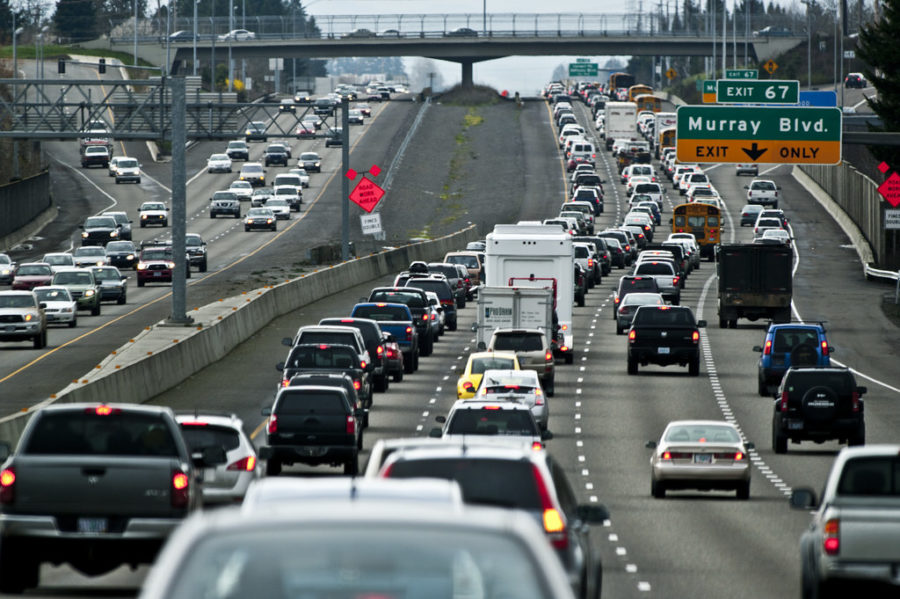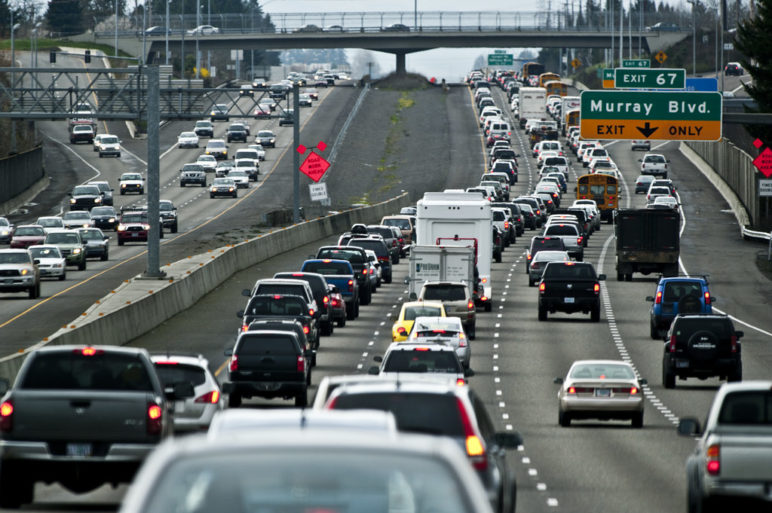Editor’s note: This article was originally published in 2017 but we’ve updated it with details about the current status of the project, including the Environmental Assessment published February 15, 2019, open for public comment through April 1, 2019.
What if you had back pain and your doctor told you: “Physical therapy could relieve your pain, and it offers other health benefits. Or you could do a very expensive surgery which comes with additional health risks and, I’m sorry to say, probably won’t help.” Would you:
- Shell out the money to do the surgery first. If it doesn’t work you can always try physical therapy later.
- Try the less expensive physical therapy first. If it doesn’t work, at least you gained the other health benefits and you can always try the surgery later.
- Pay to do the surgery and the physical therapy at the same time.
Obviously option 2, right?
Portland faces a similar challenge. Congestion in the I-5 Rose Quarter Freeway is causing pain for drivers. Taxpayers could try one of the following options to try to reduce drivers’ pain:
- Shell out at least $450 million for a mega freeway expansion. That’s a lot of money, and the project will likely cause other problems like increasing air pollution and climate pollution, and lots of experience (and here and here) says it won’t decrease congestion.
- Try decongestion pricing first. It is proven to reduce congestion, it could also reduce pollution, and the region (possibly subject to legal constraints) could use the revenue to give non-drivers more mobility options. Oregon Department of Transportation (ODOT) can still expand the freeway later, but by trying decongestion pricing first, it could at least re-size the project to address whatever congestion remains after pricing.
- Pay out the money to expand the freeway, but also try decongestion pricing. All the risks and costs of freeway expansion, but with decongestion pricing, too.
We have recent evidence, right here in Portland, that widening the freeway can actually worsen congestion. There’s also real world evidence that shows that decongestion pricing could eliminate the need for billions in highway widenings. Look at Louisville, Kentucky, which paid $1 billion to widen I-65 as it crosses the Ohio River (a route very similar to I-5) to reduce congestion. After finishing the project, they started charging drivers $1 to $2; traffic volumes fell by almost half from pre-construction levels. If they’d tolled first, they would have discovered that they didn’t need any additional lanes at all. Choosing option 3 instead of option 2 meant the city wasted $1 billion.
Now through April you can comment on the project’s Environmental Assessment, encouraging ODOT to try option 2, not option 3. Oregon House Bill 2017 authorized the funds for the Rose Quarter expansion (the state expects to pay $30 million per year from 2022 through 2037 to pay for the megaproject). But the bill also requires the Oregon Transportation Commission to implement value pricing on the I-5 between the Washington state line and its intersection with I-205. The Oregon Transportation Commission has received a roadmap from the federal government about how to secure federal approval for decongestion pricing.
Oregon could conceivably implement pricing in 2020 and monitor the results before breaking ground on the megaproject. Your comments on the EA could push ODOT in that direction.









